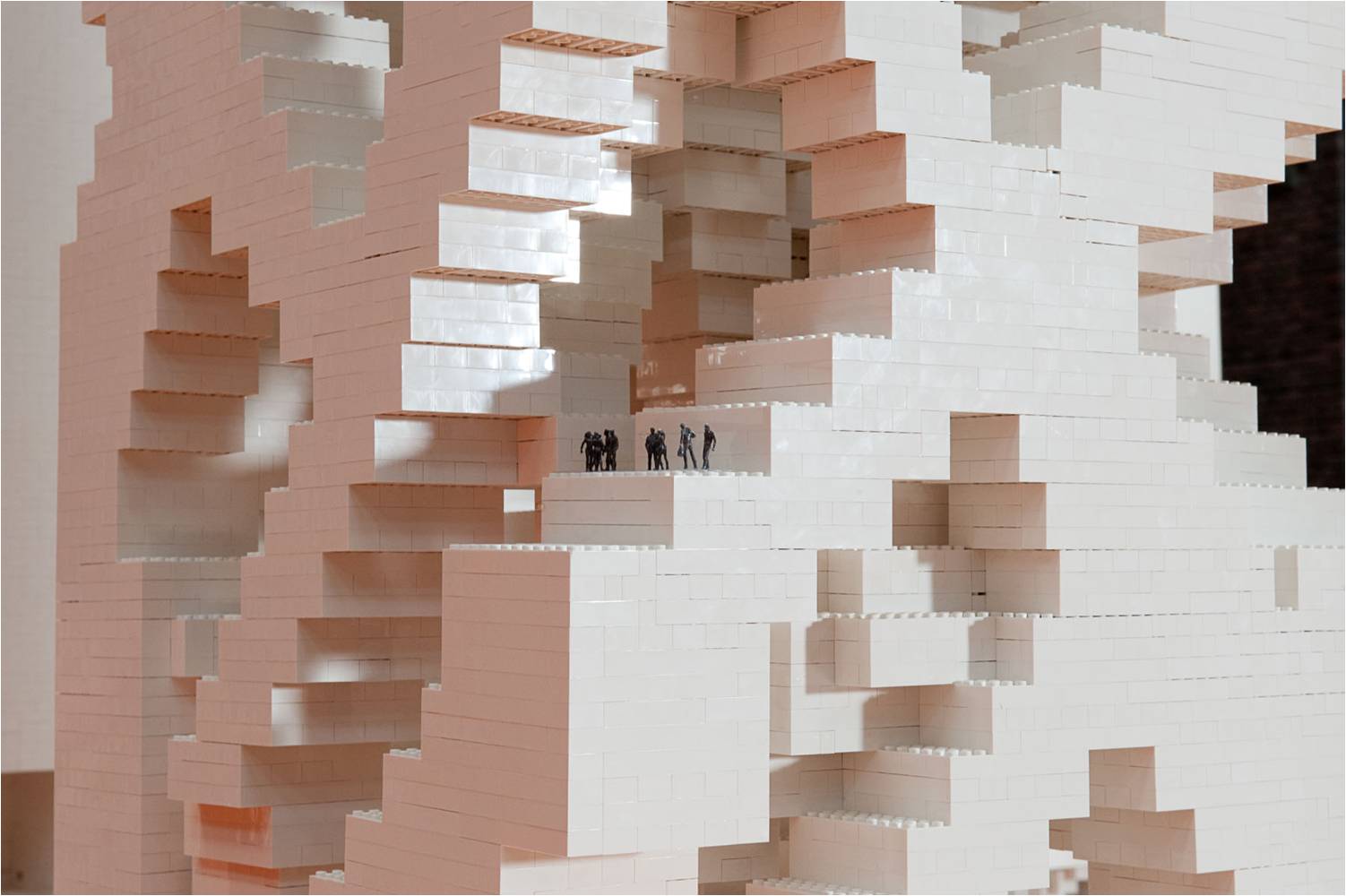On June 15th, 2018 the exhibition Coder le monde (Coding the world) opened to the public at Centre Pompidou in Paris. The show takes stock of contemporary digital creation in different disciplines and includes a display of several PoroCity towers, created by the researchers and students of The Why Factory. The Why Factory is a think-tank and research institute led by professor Winy Maas, founding partner of MVRDV, at the faculty of Architecture and the Built Environment, TU Delft.
Coder le monde is a survey exhibition that takes stock of contemporary digital creation across various disciplines. Looking back at the history of the digital code and the way artists have used it since the computer appeared in the 1960s, the exhibition reveals a shared aesthetic and critical world that questions our daily lives, now entirely dependent on digital logic. Based on six timelines (The History of Code, The Algorists, Music and Code, Digital Literatures, Digital Forms in Architecture and Design, The Body and Code), Coder le monde highlights numerous correspondences between various creative approaches and provides an overall interpretation of what makes a digital culture.
The exhibition also documents another visual universe linked to digital formalisation, the world constituted of pixels and also of (three-dimensional) voxels that one finds both in such anticipatory endeavours as François Morellet’s Random Distribution of 40,000 Squares Using the Odd and Even Numbers of a Telephone Directory and in the recent works of Farah Atassi, Mishka Henner and Philippe Schaerer. These pixels and voxels are also the
Artists included in the exhibition are Manfred Mohr, Frieder Nake, George Nees, Hiroshi Kawano, Ken Knowlton, Gottfried Honegger,
The exhibition is curated by Frédéric Migayrou (Curator) and Camille
PoroCity Manifesto
Welcome to a porous society!
Welcome to cities that want to be open and porous! Our current cities consist of towers and blocks that are enclosed, distant, introverted and not mixed with urban life, social possibilities or ecological potentials. They are not open. How to open them? How can we introduce pockets for encounters, for streams of circulation and communication, for zones for greenery and animals, for tunnels of cooling and refreshment, for channels and pockets of water and sanitation...
What logic can be imagined in our towers to allow for this openness?
By using stepped floors making stairs all through the towers…
By creating grottos that group and collect people...
By splitting towers that multiply the surface of the façade...
By twisting blocks that thus create pocket parks…
And so on…
The Why Factory
Instructors: Prof. Winy Maas, Alexander Sverdlov, Ania Molenda and Adrien Ravon.
Students: Jaap de Jong, Marina Ferrando, Alise Jekabsone, Jayson Johnstone, Valerie Krautzer, Qian LAN, Bill Lee, Albert Mark, Ana Melgarejo, Vincent Paar, Marcus Parviainen, Alex Parvu, Pedro Pitarch, Mihaela Radescu, Marie-Lahya Simon, Leo Stuckardt, Calvin Tanikaya and Cyrus Wong.
On 16th June 2018, Adrien Ravon of The Why Factory will contribute in a panel discussion on Architecture and Design.
To find out more here.
